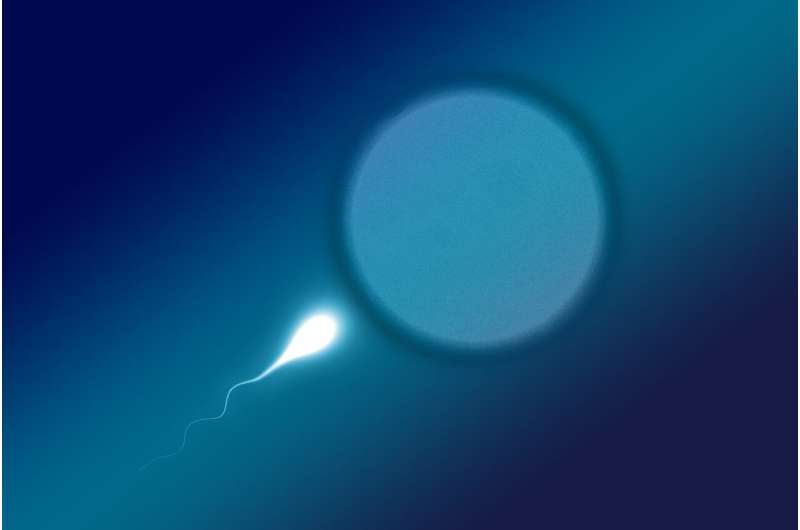Credit: Pixabay/CC0 Public Domain
A new protein named MAIA after the Greek goddess of motherhood could be crucial in helping doctors better understand some aspects of infertility and develop novel treatments. Currently, infertility is unexplained in more than half of people who are unable to conceive naturally.
In the first study of its kind, the international team of researchers led by the University of Sheffield created artificial eggs using thousands of beads. Each of these beads had a different piece of protein, known as a peptide, on its surface so that sperm could bond with them.
When sperm were incubated with the beads, scientists found only a small number of beads had sperm attached to them. After several painstaking rounds of removing any beads that didn't have sperm bound to them, researchers were eventually left with beads corresponding to one particular protein—MAIA—and sperm bound to all of these beads.
The gene corresponding to MAIA was then inserted into human culture cells, and these became receptive to sperm in the exact way that it would during the natural fertilization process.
The findings, published in Science Advances, reveal that during the process, MAIA is responsible for drawing sperm into the egg for fertilization.
Professor Harry Moore, Lead Investigator of the study from the University of Sheffield's School of Biosciences, said, "Infertility is unexplained in more than half of those who struggle to conceive naturally. What we know about fertility in humans has been severely limited by ethical concerns and the lack of eggs for research.
"The ingenious artificial fertilization technique which enabled us to identify the MAIA protein will not only allow scientists to better understand the mechanisms of human fertility, but will pave the way for novel ways to treat infertility and revolutionize the design of future contraceptives."
The findings could help to confirm the theory that some sperm may not be compatible with some eggs. Researchers now plan to explore whether sperm from different individuals bind to the protein differently.
Professor Allan Pacey, Co-Author of the study and Head of the University of Sheffield's Departments of Oncology and Metabolism and Infection, Immunity and Cardiovascular Disease, said, "This discovery of the MAIA protein is a major step forward in how we understand the process of human fertilization. It would have been almost impossible to discover without the use of the artificial beads to replicate the surface of human eggs as we simply wouldn't have been able to get enough eggs to do the experiment. A classic case of thinking out of the box."
More information: Jana Svobodova et al, MAIA, Fc receptor-like 3, supersedes JUNO as IZUMO1 receptor during human fertilization, Science Advances (2022). DOI: 10.1126/sciadv.abn0047. www.science.org/doi/10.1126/sciadv.abn0047
Journal information: Science Advances
Provided by University of Sheffield
























